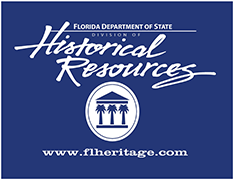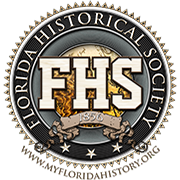Florida’s Highwaymen artists have been recognized with numerous exhibitions in major museums, several books, and a television documentary.
Even with this widespread notoriety, amazing stories about pennies on the dollar sales of Highwaymen paintings still surface.
Someone’s sister-in-law buys a Highwaymen painting of a bright red Poinciana tree at a garage sale for $25. The work is worth $2,500.
Someone who doesn’t know what they have sells a large Highwaymen beach scene worth $3,500 to a friend-of-a-friend for the cost of the frame alone.
For those who know what they are looking for, great Florida paintings by Highwaymen artists are occasionally found being sold at their original 1950s prices.
The Highwaymen artists are a group of largely self-taught African American painters known for their colorful Florida landscapes. The first Highwaymen artist, Alfred Hair, was inspired by white landscape artist A.E. “Bean” Backus, who had a meticulous, detail oriented painting style. Hair also painted scenes of the natural Florida, but developed a rapid style of painting that allowed him to create beautiful works very quickly.
Hair shared his painting techniques with Harold Newton, who in turn, taught other African American artists.
Backus was able to sell his paintings in galleries, but in the racially segregated Florida of the 1950s and ‘60s, the Highwaymen had to develop creative marketing strategies.
“I was the salesman for the whole group,” says Al Black. “I would load all the paintings up in the car and take off in the mornings, and if they give me 50 paintings I would sell 50 paintings.”
Starting from Fort Pierce, Black would drive south to Key West and north to Alabama, making many stops in between. He would sell the Highwaymen art to banks, offices, and along the side of the road.
The Highwaymen artists produced many works of art for Black to sell, because the more they produced, the more they earned. Sometimes the paintings would still be wet when he loaded them into his car. Repairing damaged work was how Black eventually became a Highwaymen artist himself.
“I would be out on the road and I learned to paint by fixing all of the different artist’s paintings when I messed one up,” says Black.
The Highwaymen artists are known for their idyllic depictions of the natural Florida prior to development and urban sprawl. Their paintings capture marshlands, river scenes, beaches, sunrises and sunsets, Spanish moss hanging from cypress trees, brightly colored Poinciana trees, and Florida’s indigenous wildlife.
Black says that the Highwaymen paintings preserve Florida history. “The way Florida used to look, it don’t look that way anymore. We all captured it on canvas.”
Mary Ann Carroll has the distinction of being the only female Highwaymen artist. “I never really thought about it as me being a woman and they being men,” Carroll says. “I just thought of us as artists making a living for ourselves.”
The Highwaymen artists never thought of themselves as an organized group, Carroll says. While each of the Highwaymen had the same goals and desires, they worked independently. “It’s like a bunch of people in an orange grove picking fruit,” says Carroll. “But everybody’s picking his own fruit. We were associated by our gift.”
The name “Highwaymen” was given to the painters by art dealer Jim Fitch in 1995, in an article he wrote for the magazine “Antiques and Art around Florida.” After Fitch coined the Highwaymen name, books about the artists soon followed. In 2001, Gary Monroe wrote “The Highwaymen: Florida’s African American Landscape Painters.”
In 2004, a group of 26 Highwaymen artists were inducted into the Florida Artists Hall of Fame.
Original Highwaymen artist Roy McLendon was surprised to see so many artists being recognized. “A lot of the people I didn’t even know,” McLendon says. He believes that the popularity of Highwaymen paintings led to imitation. “Pictures that would sell for $35 was selling for $3,500 and $4,500 for the same painting. Now everyone wanted to be a Highwaymen.”
The cost of a painting is not what makes it significant.
The story of the Highwaymen artists is one of creative people making economic opportunities for themselves in a difficult time of racial segregation in Florida.



